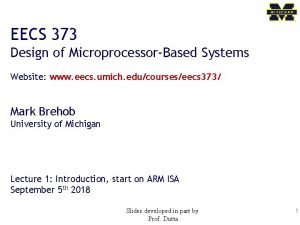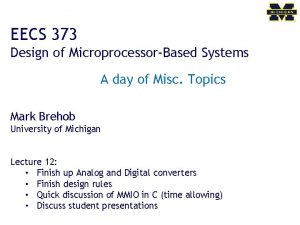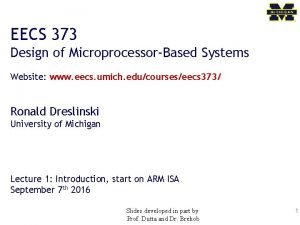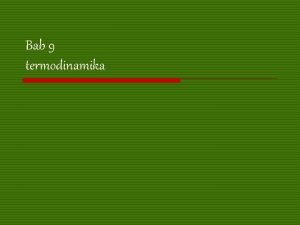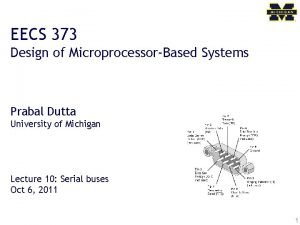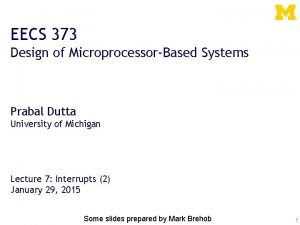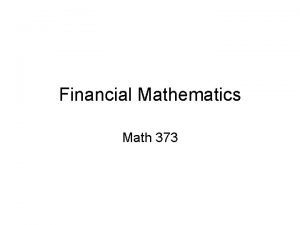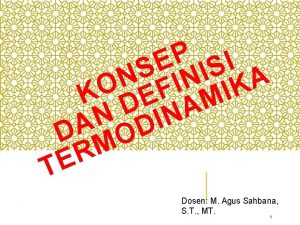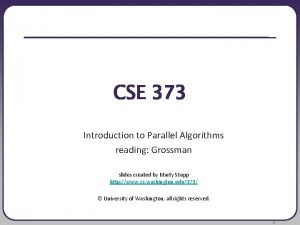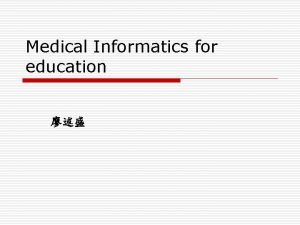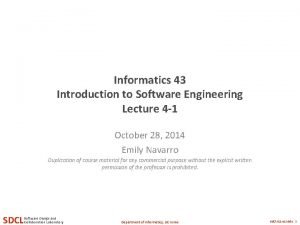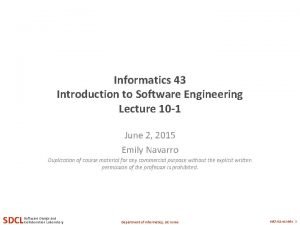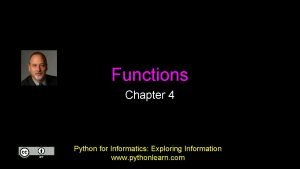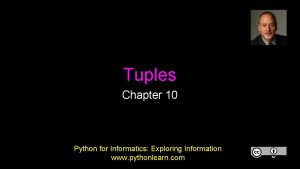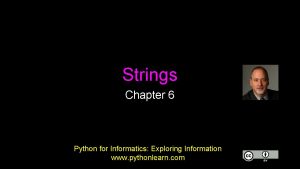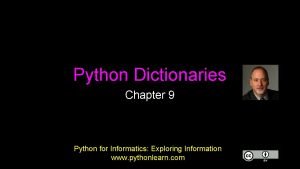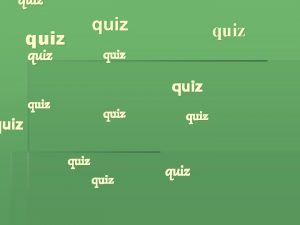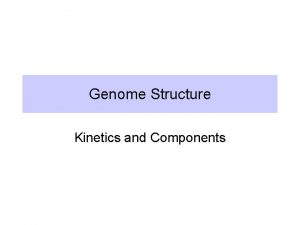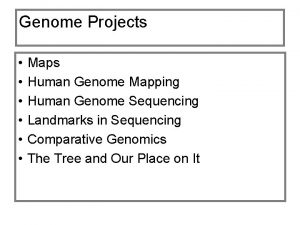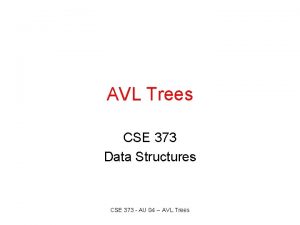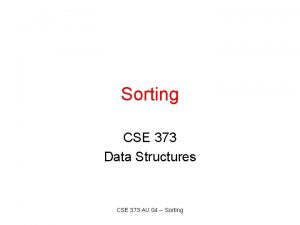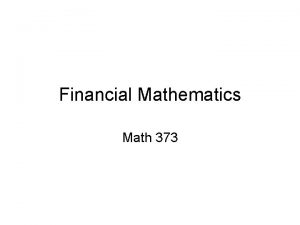Genome Sciences 373 Genome Informatics Quiz Section 4
































- Slides: 32

Genome Sciences 373 Genome Informatics Quiz Section 4 April 21, 2015

Topics today • Questions about homework • Smith-Waterman algorithm: local alignment • Reading files in python • Functions in python

Smith-Waterman alignment • Local alignment means: – We don’t have to end at the bottom right – We don’t have to end at the top left • Best alignment may only be a single pair of nucleotides!

S-W: what to check when finished • All cells with positive numbers should have arrows pointing in – (how did I get here? ) • …but not necessarily pointing out • Calculate the alignment score by hand double-check your work

Let’s align two sequences: CGTTA & GACGT Note: they don’t have to be the same length! substitution matrix A C G T 4 -2 0 -2 4 -2 0 4 -2 G T gap penalty -3, linear 4

C 0 G A C G T T A

0 G 0 A 0 C 0 G 0 T 0 C G T T A 0 0 0

C G T T A 0 0 0 G 0 0 A 0 C 0 G 0 T 0

C G T T A 0 0 0 G 0 0 4 A 0 C 0 G 0 T 0

C G T T A 0 0 0 G 0 0 4 1 0 0 A 0 0 1 2 0 4 C 0 4 1 0 0 1 G 0 1 8 5 2 0 T 0 0 5 12 9 6

C G T T A 0 0 0 G 0 0 4 1 0 0 A 0 0 1 2 0 4 C 0 4 1 0 0 1 G 0 1 8 5 2 0 T 0 0 5 12 9 6

C G T T A 0 0 0 G 0 0 4 1 0 0 A 0 0 1 2 0 4 C 0 4 1 0 0 1 G 0 1 8 5 2 0 T 0 0 5 12 9 6

C G T T A 0 0 0 G 0 0 4 1 0 0 A 0 0 1 2 0 4 C 0 4 1 0 0 1 G 0 1 8 5 2 0 T 0 0 5 12 9 6

C G T T A 0 0 0 G 0 0 4 1 0 0 A 0 0 1 2 0 4 C 0 4 1 0 0 1 G 0 1 8 5 2 0 T 0 0 5 12 9 6

C G T T A 0 0 0 G 0 0 4 1 0 0 A 0 0 1 2 0 4 C 0 4 1 0 0 1 G 0 1 8 5 2 0 T 0 0 5 12 9 6

C G T T A 0 0 0 G 0 0 4 1 0 0 A 0 X 0 1 2 0 4 C 0 4 1 0 0 1 G 0 1 8 5 2 0 T 0 0 5 12 9 6

Best local alignment is: CGT

S-W: what to check when finished • All cells with positive numbers should have arrows pointing in – (how did I get here? ) • …but not necessarily pointing out • Calculate the alignment score by hand double-check your work

gap penalty -3, linear Best local alignment is: CGT Calculate the score substitution matrix A C G A 4 -2 0 C 4 -2 G 4 T T -2 0 -2 4

C G C T A 0 0 0 G 0 0 4 1 0 0 A 0 0 1 2 0 4 C 0 4 1 5 2 1 G 0 1 8 5 3 0 T 0 0 5 8 9 6 Here we make a small change to one of the sequences

C G C T A 0 0 0 G 0 0 4 1 0 0 A 0 0 1 2 0 4 C 0 4 1 5 2 1 G 0 1 8 5 3 0 T 0 0 5 8 9 6 Note that our score drops and then goes up again!

Practice problem align TGCATT and GGCA using Smith-Waterman local alignment

Practice problem align TGCATT and GGCA using Smith-Waterman local alignment Answer: GCA with score = 9

Reading files: several options Example code to read just one line: my_filename = sys. argv[1] my_open_file= open(my_filename, “r”) # read just the first line my_first_line = my_open_file. readline() # now I can read another line my_second_line = my_open_file. readline() my_third_line = my_open_file. readline()

Reading files: several options Example code to read it all at once: my_filename = sys. argv[1] my_open_file= open(my_filename, “r”) # read all of my file at once. # note: if your file is really big (like, say, >1 Gb) # then you do NOT want to do this! my_entire_file = my_open_file. read() # split it into a list of strings my_lines = my_entire_file. split(“n”) for my_line in my_lines: do_something()

Reading files: several options Example code to read all lines, one at a time: my_filename = sys. argv[1] my_open_file= open(my_filename, “r”) num_lines = 0 for my_line in my_open_file: my_line = my_line. strip() # chop off the “n” at the end do_something() num_lines += 1 print “I found %d lines” % num_lines # alternative way for my_line in my_open_file. readlines(): my_line = my_line. strip() # chop off the “n” at the end do_something()

Functions in Python: a brief overview You’ve already seen several functions in python: int(argument) convert argument to an integer, return the integer float(argument) convert argument to a float, return the float len(argument) calculate the length of argument, return the length

Functions in Python: a brief overview Functions are: reusable pieces of code, that take zero or more arguments, perform some actions, and return one or more values

Functions in Python: a brief overview Functions are: reusable pieces of code, that take zero or more arguments, perform some actions, and return one or more values conceptually function “sum” takes arguments a, b adds a and b returns sum

Functions in Python: a brief overview Functions are: reusable pieces of code, that take zero or more arguments, perform some actions, and return one or more values in python… conceptually function “sum” takes arguments a, b adds a and b returns sum def sum(a, b): total = a + b return total # later in the program my_sum = add(2, 5) # my_sum is now 7

Functions in Python: a brief overview Functions are: reusable pieces of code, that take zero or more arguments, perform some actions, and return one or more values in python… stuff that happens in here is invisible outside of the function def sum(a, b): total = a + b return total # later in the program my_sum = add(2, 5) print total # this won’t work!

In-class example: Write a function to calculate the factorial of an integer
 Genome-to-genome distance calculator
Genome-to-genome distance calculator Observational health data sciences and informatics
Observational health data sciences and informatics Human sciences tok
Human sciences tok Chapter 13 section 3 the human genome
Chapter 13 section 3 the human genome Eecs 373
Eecs 373 Eecs 373
Eecs 373 Eecs 373
Eecs 373 Cp-cv=r/m
Cp-cv=r/m Eecs 373
Eecs 373 Eecs 373
Eecs 373 Math 373
Math 373 Suhu tiga mol suatu gas ideal adalah 373 k
Suhu tiga mol suatu gas ideal adalah 373 k Eecs 373
Eecs 373 Drg koder
Drg koder Marty stepp
Marty stepp Nursing informatics and healthcare policy
Nursing informatics and healthcare policy Introduction to medical informatics
Introduction to medical informatics Informatics 43 uci
Informatics 43 uci In4matx 43 uci
In4matx 43 uci Supply chain informatics
Supply chain informatics Python for informatics: exploring information
Python for informatics: exploring information Dikw examples in nursing
Dikw examples in nursing Supply chain informatics
Supply chain informatics Python for informatics: exploring information
Python for informatics: exploring information Banaprint
Banaprint Python for informatics
Python for informatics Medical informatics definition
Medical informatics definition Health informatics
Health informatics Medical automation systems
Medical automation systems Nursing informatics theories, models and frameworks
Nursing informatics theories, models and frameworks Belarusian university of informatics and radioelectronics
Belarusian university of informatics and radioelectronics Python for informatics: exploring information
Python for informatics: exploring information What is pharmacy
What is pharmacy




